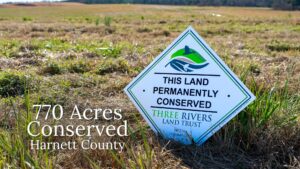
by Crystal Cockman
March 22, 2016
I enjoy watching a show called “Finding Your Roots” on PBS. The host
A lady named Margo Lee Williams thoroughly traced her ancestry back and recounts the entire process in her book entitled Miles Lassiter (circa 1777-1850) An Early African-American Quaker from Lassiter Mill, Randolph County, North Carolina: My Research Journey to Home. She began her research after learning about Alex Haley’s search for his ancestors and publication of his book Roots. She learned of and used resources like the Family History Library in Salt Lake City, Utah, the National Archives and Library of Congress in Washington DC, all the way down to the Randolph County Library and Genealogical Society of Randolph County.
Margo’s story is interesting in one sense because her mother had become estranged from her family in North Carolina, and Margo was able to reconnect with a variety of family members through her research. She traced her mother’s family back three generations to Miles Lassiter. She learned her Grandma Ellen owned property in the country on the Uwharrie River. She states that the land “became the principal source of and key to [her] family’s genealogy and its history.” She found from a death certificate that her Grandma Ellen was the daughter of Nancy Lassiter and Calvin Dunston. By looking through census records she found that Miles Lassiter was the father of Nancy.
Margo learned from a book entitled the Encyclopedia of Quaker Genealogy that Miles Lassiter had requested to become a Quaker in 1845. He was one of few African American Quakers in North Carolina and the only one at the time of his death. Miles requested to be a member of the Back Creek Monthly Meeting in March of 1845 and his request was confirmed in June of the same year. Margo says that the Quakers had a strong relationship with the community and provided help to slaves and free people of color, but African Americans were not generally formally admitted to Meetings in North Carolina before the Civil War.
Margo traces the land from Miles down to her Grandma Ellen and sister Adelaide through a variety of records and research, and uncovers more interesting facts along the way. She found Miles obituary in the Friends Review, which confirmed that he was a slave, but became the manager and overseer for the Widow Lassiter and her family, even owning land himself. His wife Healy purchased him for five cents from the family in February of 1840. Miles died on June 22, 1850. He and Healy amassed over 400 acres of land in their lifetime.
Margo’s guess as to why her immediate family became estranged from the rest was that her grandma Ellen sued her sister Adelaide over ownership of the land. She states that her speculation is that “family members took sides in the dispute, with [her] immediate relatives slowly becoming alienated.” She states “the very land that has been the glue for so many family members became the source of separation…” However, she is grateful that her research brought her back to her extended family and that she can now share her legacy with her own daughter.
Reading this history has inspired me to do more research on my own ancestral roots. I’ve done just a bit of historical research online of my own family, and found that my roots in Montgomery County go back pretty deep. I always knew that my grandpa, Lyhue Lacy Beane, grew up in Montgomery County. Through his line, we trace all the way back to John Bailey Callicott, who was born in 1745 in Virginia. He served in the Revolutionary War under General George Washington’s command. In 1796, he purchased the “Thomas Ward Plantation” on the Little River in Montgomery County, selling 100 acres in Prince Edward County Virginia. I hope to one day uncover where exactly their land was, as it would be interesting to know. On my maternal grandmother’s side, she still lives on the land where her parents lived, and it’s rewarding to me to hunt the same land they once did. It’s almost certain for every family history that there is a connection to land. It is one thing that bonds us all across generations.
*The history of Miles Lassiter is taken from the book “Miles Lassiter (circa 1777-1850) An Early African-American Quaker from Lassiter Mill, Randolph County, North Carolina: My Research Journey to Home,” by Margo Lee Williams. 2011. Published by Backintyme, Palm Coast, Florida, U.S.A.